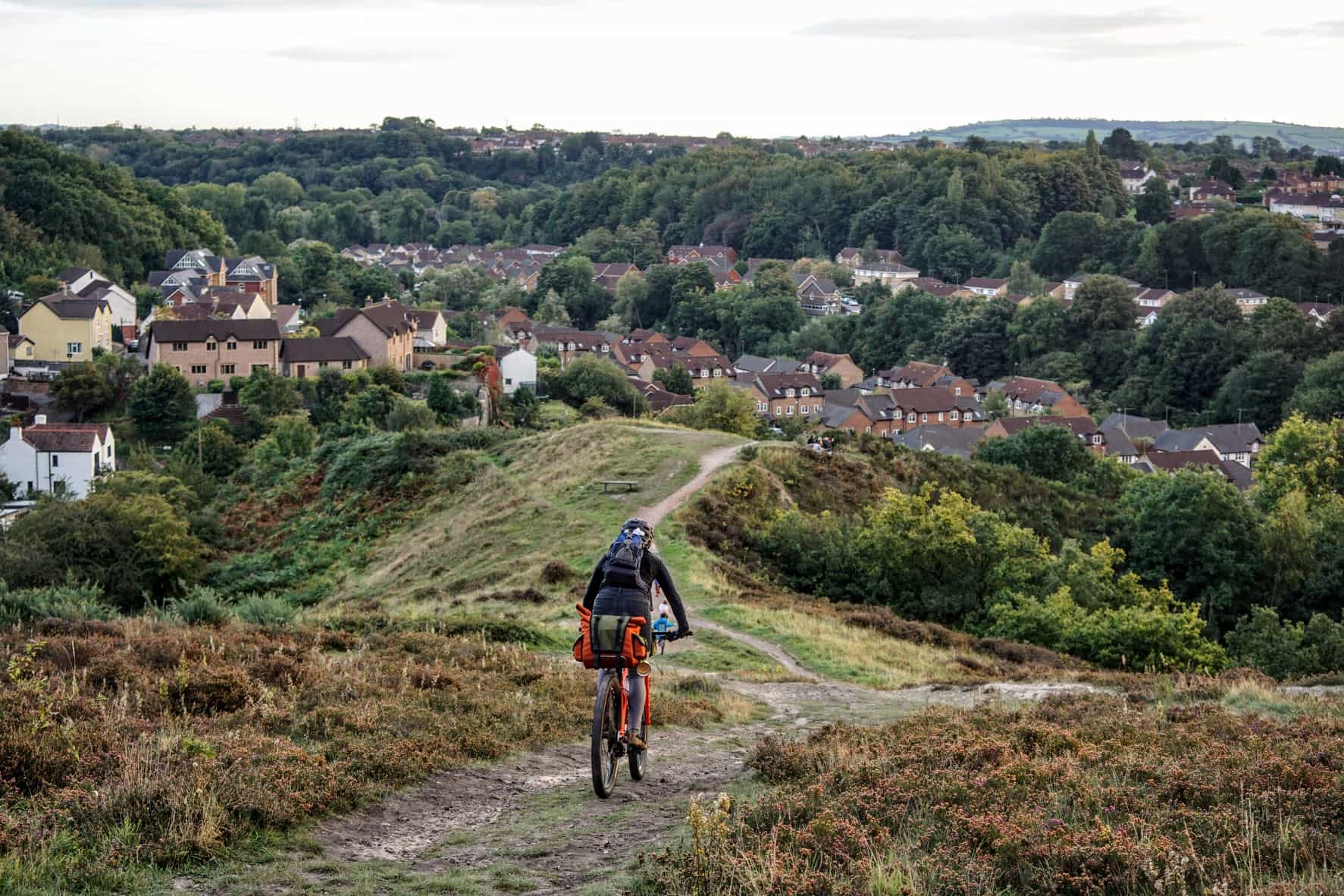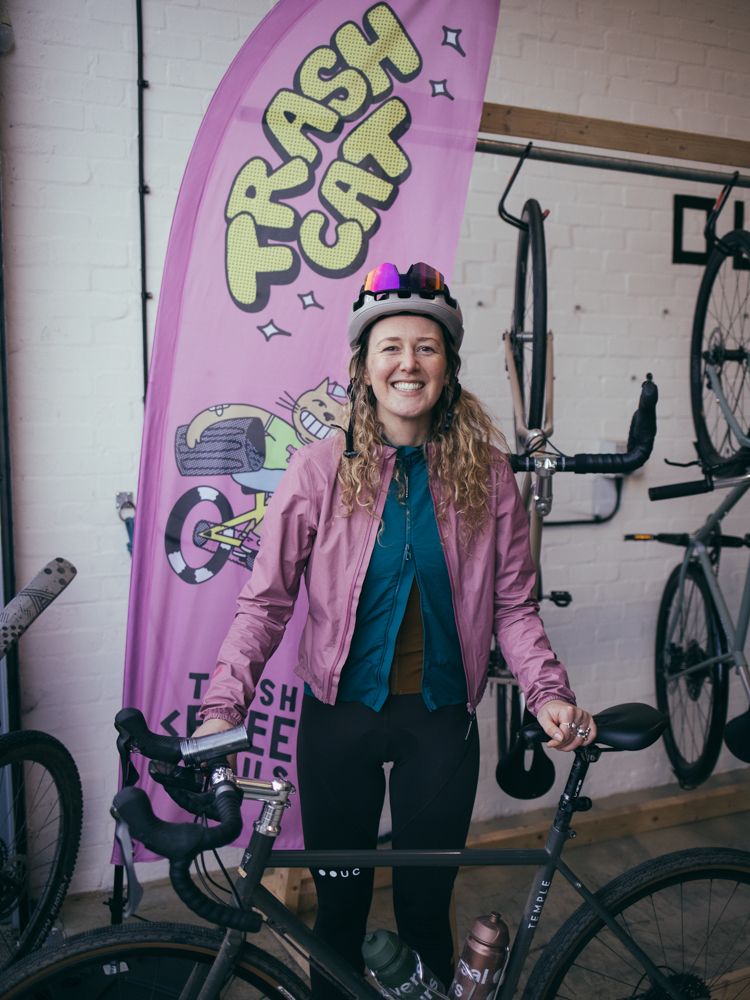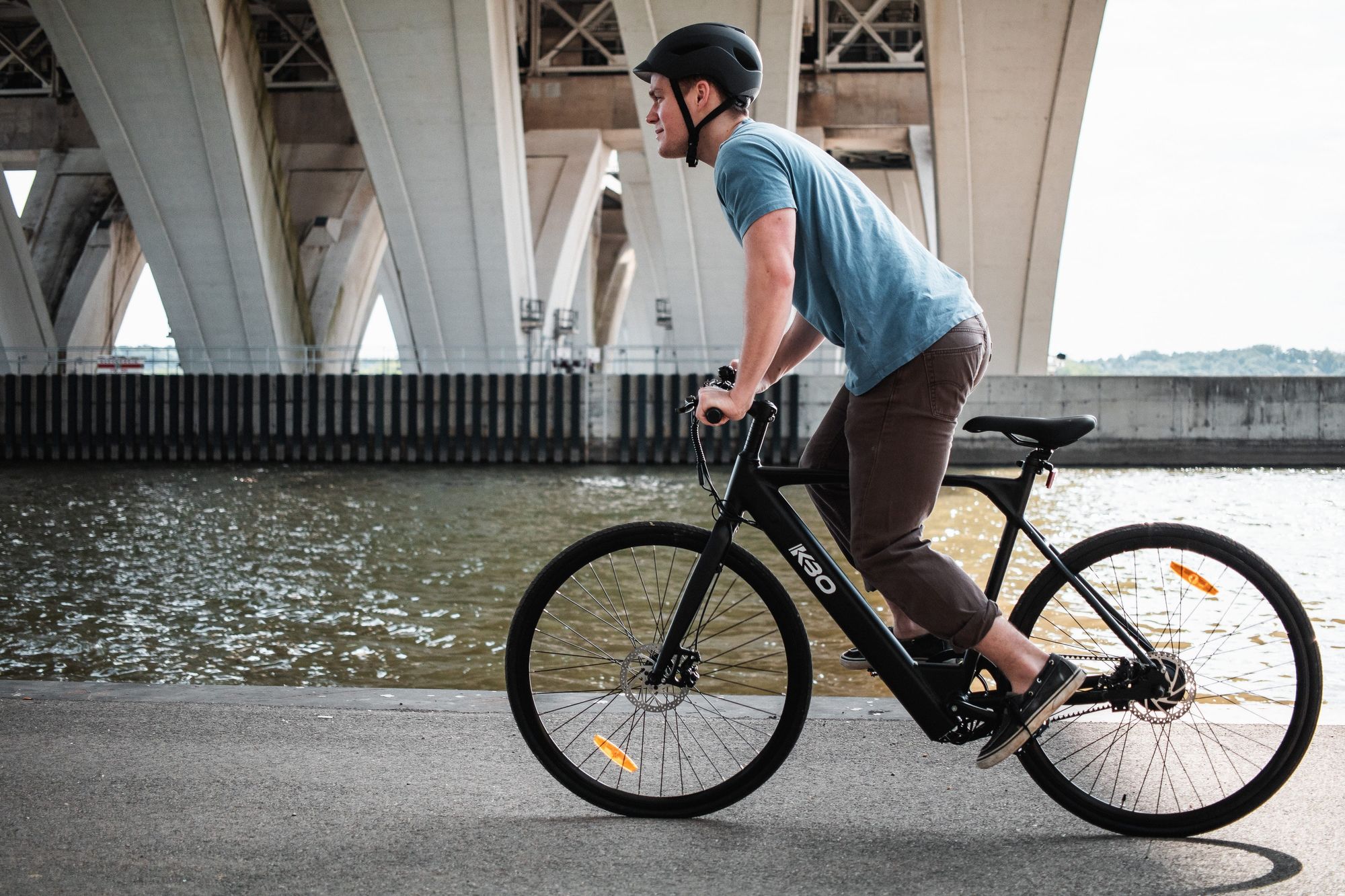From how you purchase bikes or sustainable cycling clothing to helping them to last longer and considering end of life options, here are a few ideas to help you become a more sustainable cyclist.
Repair before you replace
Wear, snags and tears are all part of enjoying your cycling kit, but that doesn’t have to mean the end of the line for your equipment. Whether it’s a hole in your bar bag from a front wheel buzz or a ripped sleeve from a crash, many brands now offer repair schemes for your kit.
Check out the mending programmes offered by Apidura, Velocio, Alpkit and Patagonia to name a few, or even try your hand at patching at home.
Buy second hand
Not only will buying second hand save you a wodge of cash, but it’s also great for the environment. Getting further use out of existing materials reduces the demand for raw materials and the energy input required to produce the finished products.
Search for second hand components, bikes, kit and bikepacking gear online through forums, sites like eBay and Facebook Marketplace, as well as good old bike jumbles. If you haven't been to a cycle jumble you really should!
Buying second hand can come in especially useful if you’re considering trying a new discipline, like bikepacking for example. No need to get a mortgage to try something different when there’s bargains to be had on the preloved market!
It almost goes without saying that when you’ve finished enjoying a particular product, selling it on or donating it to a local cycling charity is a great way to ensure that someone else can enjoy it for years to come too.
Enjoy environmentally-friendly snacks
A bar or gel wrapper might not seem like much waste, but when you add up all the snacks you consume in a ride, month or year then it can get pretty frightening.
Thankfully today there are a growing number of brands offering snacks wrapped in eco-conscious packaging, like the compostable Outdoor Provisions wrappers, or you could opt to make your own rice cakes and bars wrapped in paper or beeswax cloth.
See someone else’s wrappers dropped at the side of the road or trail? Make Trash Free Trails proud and pick them for recycling or the bin to help keep our countryside looking gorgeous.
Consider your frame material choice
When it comes to assessing how green your frame choice is, you’ll need to take into account both manufacture, lifespan and what happens to your bikes when you (sadly) can’t ride it anymore. That might be several owners down the line, but it’s still an important aspect of how much impact your choice will have.
Unfortunately, there is no currently commercially viable, widely available solution for recycling carbon fibre, though there are a few brands that offer it in-house in certain geographies.
Aluminium alloy, on the other hand, is readily recyclable, and therefore in high demand. Historically, Trek’s alloy bikes contained around 30% recycled alloy material, which has fallen to around 15% due to a recent surge in demand. Inclusion of this recycled alloy results in a 90-95% reduction in energy demand in comparison to sourcing the virgin ore, according to Trek.
Steel and titanium bikes are also recyclable, and often built to last many, many years, depending on the grade used, though potentially energy-demanding to extract the metal ores. Plus, these two materials can be easier to fix than carbon fibre or alloy in the event of an accident or wear.
Ride from the trails to the office
Commuting doesn’t need to be dull. If you think outside the box a little, you can turn your direct A to B ride into a glorious early morning sunrise ride, an excuse for a trailside #coffeeoutside interlude or an effective training session.
Replan your route to avoid major roads and traffic - perhaps even hitting the gravel or singletrack on your way to and from work - and not only will you benefit from a greener commute, but you’re guaranteed to be left with a smile on your face.
Fascinatingly, Trek claims that it takes on average 430 miles of riding to offset the carbon impact of manufacturing a bike in comparison to driving the same distance. When you commute regularly, that quickly adds up!
Scrutinise eco-credentials before you purchase
Buying a bike seems like only the tip of the iceberg when it comes to the kit you’ll need or like to have for cycling, whether that’s clothing, gadgets, nutrition, maintenance equipment or tools.
Here you have the power to support brands that are taking significant action to improve sustainability. Industry-leading B-Corp certified brands include Alpkit (and Sonder bikes), Chris King and Patagonia.
Beyond the product itself, consider how it’s packaged: can you easily recycle each part? If you’re using bike cleaning products or sealants, have they been developed to be kind to the environment? Has the product been produced using recycled materials? Has it been designed to last for years to come and be easily serviced or will it fall apart in a matter of months?
Alas, you tend to get what you pay for, so spending a little extra on key items, whether that's a sustainable cycling jersey or sustainable cycling shorts, can make a huge difference in the long run to both your wallet and the planet.
Patch and recycle your tubes
If you run inner tubes, patching your tubes when they puncture is an easy win for being a more sustainable rider. Depending on how lucky (or ill-fated you are), why not save them up until you have a few and sit down inside on a rainy day with a cuppa and take your time to patch them in comfort?
The next part is where you can go one step further. Alas, some tube punctures or splits are simply not patchable, so you can recycle these inner tubes.
In the UK, Germany and the Netherlands, tube and tyre manufacturer Schwalbe run a tube recycling programme where you can deliver your spent tubes to a local bike shop. These are transported to their facility in Indonesia where the butyl rubber is reclaimed, which then goes directly into the production of new tubes, reducing energy consumption by a whopping 80% in comparison to producing new rubber butyl.
For tyre recycling, check out Velorim if you're based in the UK. For a small contribution will dispose of your tyres ecologically
Charge your devices with green energy
Electronic devices are becoming more and more integral to riding, with lights, GPS computers, battery packs, electronic gears, dropper posts and trackers all demanding energy.
How you charge these will have an impact on how sustainable your riding is, so think about switching to a home energy provider or tariff that uses sustainably produced energy, using solar panels or other means of generating green energy.
A fabulous option is to use a dynamo wheel, set up to power your lights or charge USB devices as you cruise! You can also get mini solar panels to attach to your bags when touring, and Garmin have released a cycling computer that also harvests solar energy through the screen to keep it powered for longer.
Regular TLC to minimise wear
In the era of part shortages, minimising wear on your existing components becomes even more crucial, and this has massive benefits for reducing the need for raw materials too. Keeping your drivetrain running smoothly with minimal dirt and debris can prolong its lifespan, especially if you like heading off-road where trail dirt can quickly turn into a grinding paste.
Regular bike washing and maintenance will also help you optimise the performance of your rig, so it’s a win-win.
READ MORE ON SUSTAINABILITY
We took a look at what sustainable clothing brands are available to cyclists. Check out our top 6 sustainable cycle clothing brands below.



